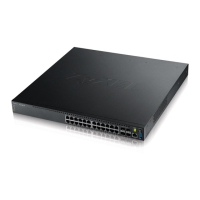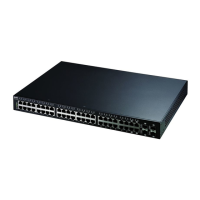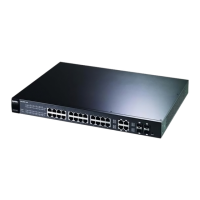GS3700/XGS3700 Series User’s Guide
265
CHAPTER 25
IP Source Guard
25.1 IP Source Guard Overview
IP source guard uses a binding table to distinguish between authorized and unauthorized DHCP and
ARP packets in your network. A binding contains these key attributes:
• MAC address
• VLAN ID
• IP address
• Port number
When the Switch receives a DHCP or ARP packet, it looks up the appropriate MAC address, VLAN ID,
IP address, and port number in the binding table. If there is a binding, the Switch forwards the
packet. If there is not a binding, the Switch discards the packet.
The Switch builds the binding table by snooping DHCP packets (dynamic bindings) and from
information provided manually by administrators (static bindings).
IP source guard consists of the following features:
• Static bindings. Use this to create static bindings in the binding table.
• DHCP snooping. Use this to filter unauthorized DHCP packets on the network and to build the
binding table dynamically.
• ARP inspection. Use this to filter unauthorized ARP packets on the network.
If you want to use dynamic bindings to filter unauthorized ARP packets (typical implementation),
you have to enable DHCP snooping before you enable ARP inspection.
25.1.1 What You Can Do
• Use the I P Source Guard screen (
Section 25.2 on page 267) to look at the current bindings for
DHCP snooping and ARP inspection.
• Use the I P Source Guard Static Binding screen (Section 25.4 on page 269) to manage static
bindings for DHCP snooping and ARP inspection.
• Use the DHCP Snooping screen (Section 25.5 on page 271) to look at various statistics about
the DHCP snooping database.
• Use this DHCP Snooping Configure screen (Section 25.6 on page 273) to enable DHCP
snooping on the Switch (not on specific VLAN), specify the VLAN where the default DHCP server
is located, and configure the DHCP snooping database.
• Use the DHCP Snooping Port Configure screen (
Section 25.6.1 on page 275) to specify
whether ports are trusted or untrusted ports for DHCP snooping.

